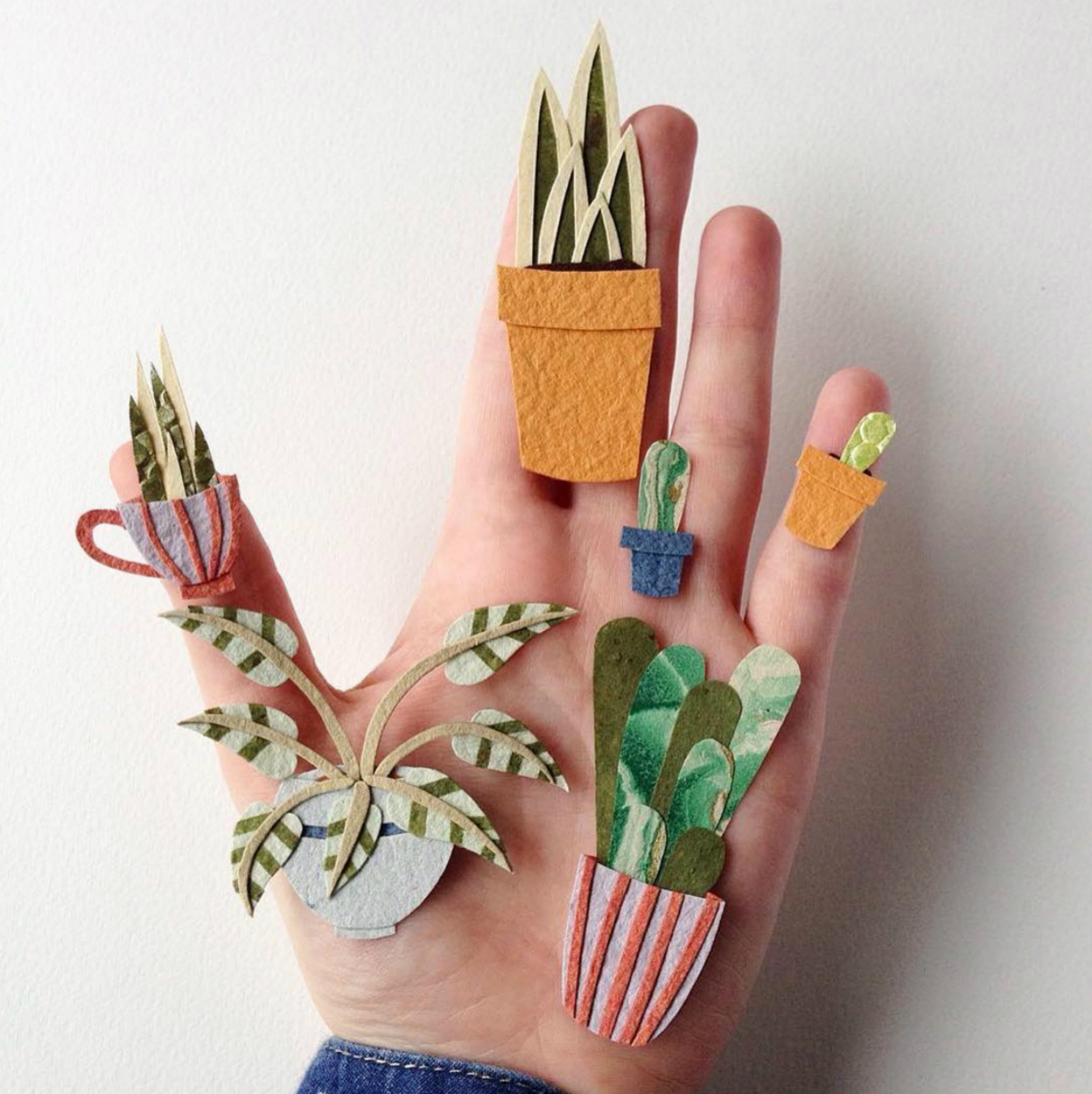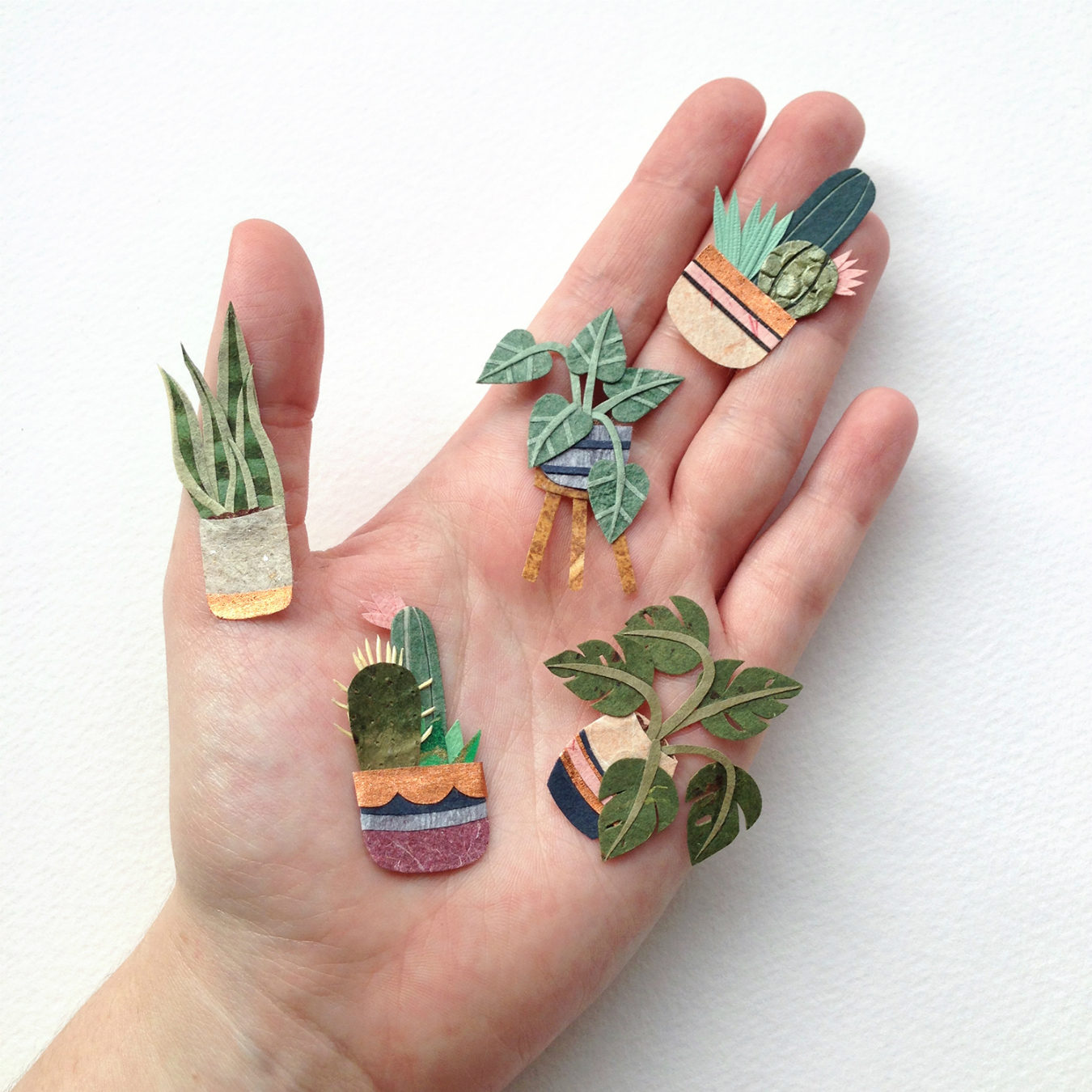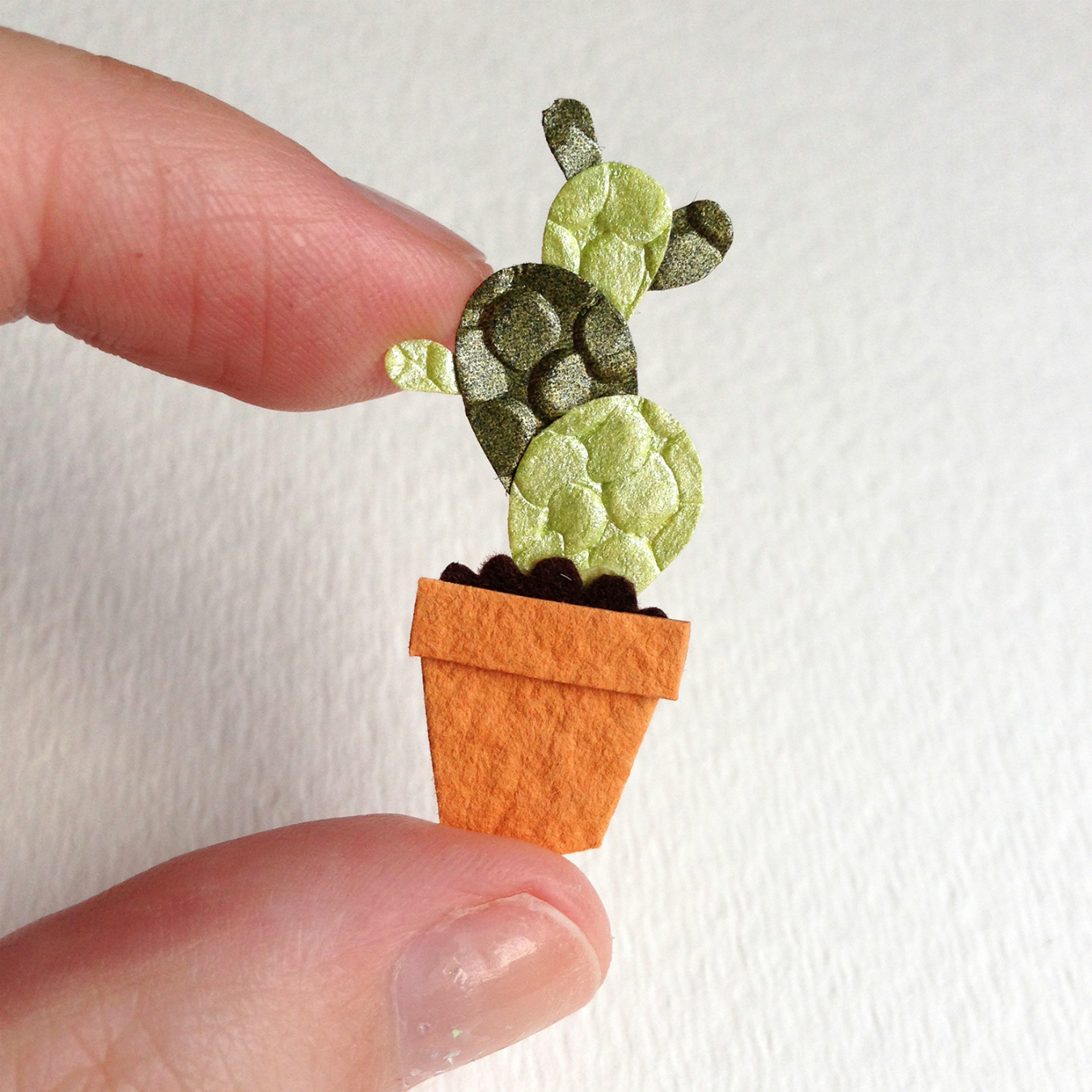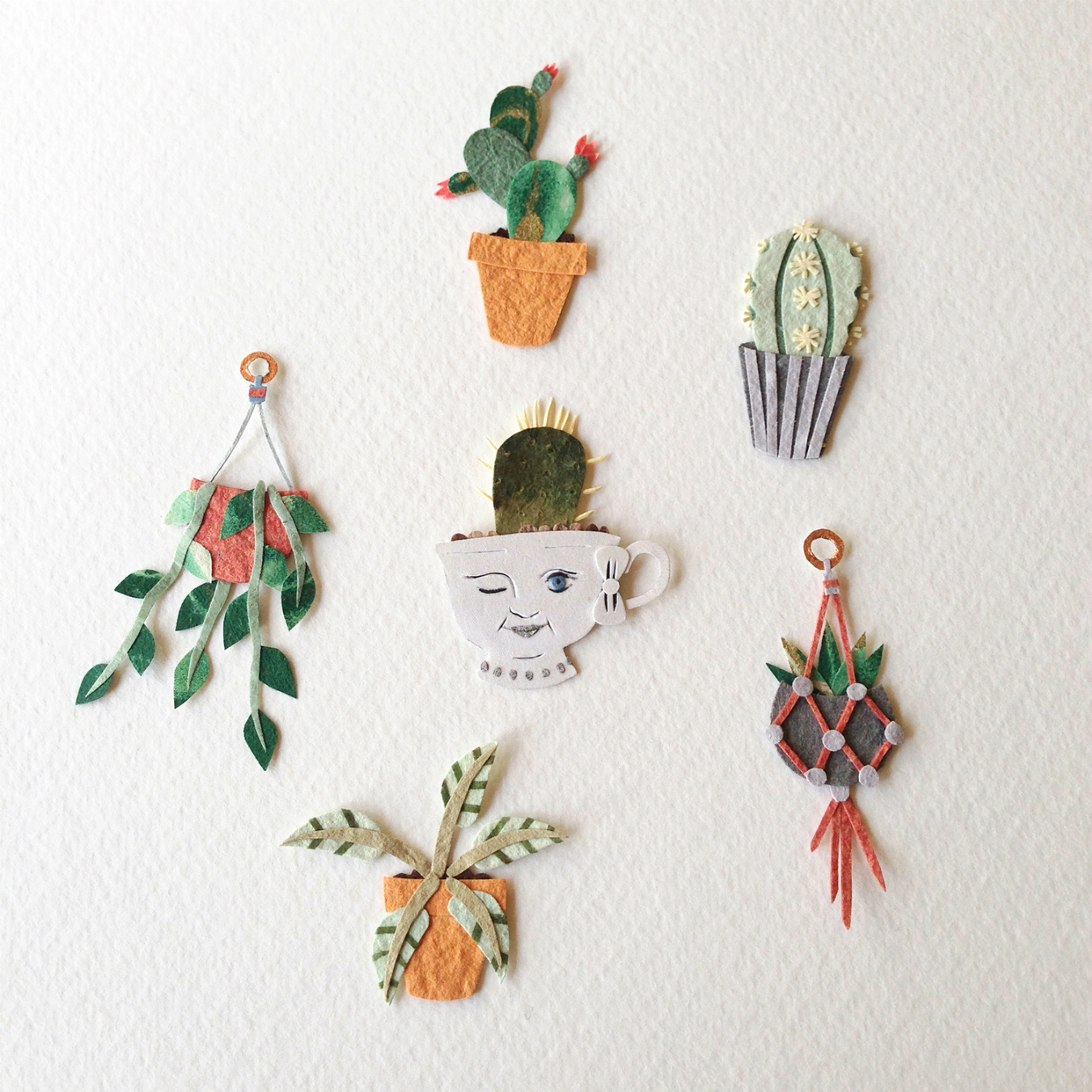Some creative ventures begin with an itch that must be scratched. For artist, illustrator, and unofficial poetry major Tara Galuska, it came to her via a bout of insomnia and a very early hour. “I am not the best sleeper,” she admits. “One night at 4 a.m. I had the overwhelming urge to make some tiny paper artworks. I got really excited and decided that sleep was nowhere near happening, so I might as well roll with it and get to work.”
Her flora-centric pieces are a wonder to any onlooker. The fine pulp of her paper choices calls for quiet attention, each so delicately layered and small in scale that a few are only as wide as a fingernail. And while some of Galuska’s works have been slightly larger (palm-size at most), it is her recent collection of botancials that she’s most excited about. “I have big plans for my tiny plants,” she says proudly. “I’m currently working on a series of open edition tiny plant artworks, which will also include seasonal releases. As I work on these, I am also researching for a larger body of work that will explore the lives of people through the lens of their plants.”
For Galuska, it’s all about capturing a certain magic that happens at this bijoux scale—a far cry from the graphic design and illustration work that the Zimbabwe-born, Zambia- and Australia-raised creative was used to. “Five years ago I came to Canada on what was supposed to be a two-year trip, but I fell in love with it here and I’ve found home,” she says. (It wasn’t just the country that she fell in love with, either: Galuska’s husband is Canadian.)
“I lived most of my early childhood in constant search of all things wondrous, seeking out magic and beauty in the everyday,” she recalls. Truly, she means it, admitting in the biography on her portfolio site that when she was young, she either wanted to be an artist or a unicorn. Although, now that she is an artist, she still wants to be a unicorn. “[That magic] has continued to be a prominent factor in how I continue to navigate the world,” Galuska says. “We all get caught up in the rushing, the tasks, the deadlines, the daily grind. When something stops us in our tracks, it can give us the time and space to reflect.”
Galuska admits that while her subject matter is very organic, her guttural reactions and impulses are what drive her to create. Her hope is that each ornate piece sparks the viewer’s imagination, changing the way they view everyday life or ordinary items.
Her process is specific, starting with a distinct visual idea of what she wishes to make before breaking down the final composition into layered parts. “I work step by step, being very precise with each cut,” she says. “I consider the work to be most successful when the labour of craft is only discovered after the viewer identifies with the object.”
It’s not unusual for those encountering her work to be awestruck. She is often told that observers are filled with wonder when they discover the pieces, as though each thing and creature was injected with an element of animation or liveliness. And despite her studied practice, Galuska is just as affected. “When I get amongst a bunch of beautiful paper, I’ll start sweating and feeling a little dizzy,” she admits. Focus, determination, and integrity balance out her fantastical tendencies, however—traits she admires in friends and fellow artists Rebecca Chaperon, Aimée Henny Brown, and Zoë Pawlak, citing their copious contributions to the artistic community.
Galuska is making the rounds in her own right; she’ll be sharing her work, stories, and inspirations at Vancouver’s next PechaKucha night, on Feb. 9, 2017. She also has a shared exhibition at Kafka’s Coffee and Tea on Main Street with artist Jamie Smith in the works for March, although she the experience may cause her some separation anxiety. “They are all my precious baby angels!” she confesses. “Although I don’t have favourites, and once I’m finished, I’m really driven to see what I’m going to do next.” In the meantime, she’ll continue hunting for the perfect pulpy paper with which to make more whimsical poetry.
More from our Arts section.















